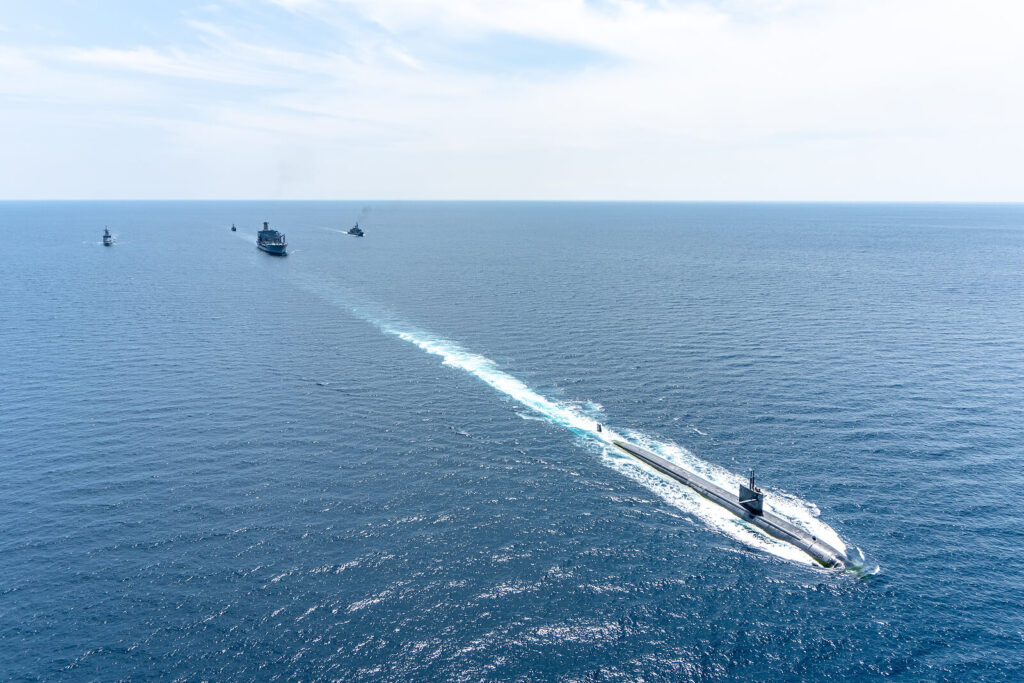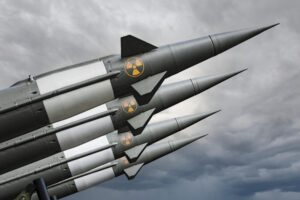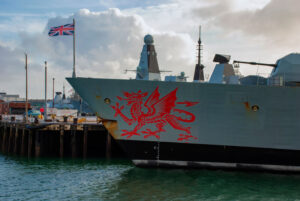The global campaigning plan envisioned by the new National Defense Strategy (NDS) recently released by the Biden administration will need to rely to a great extent on a shrinking Navy to accomplish its goals, especially in the more remote areas of interest including the Indo-Pacific and the Arctic.
The Chief of Naval Operations’ current goal of 355 manned and 150-plus unmanned ships charts a path to grow the fleet for global competition with China, Russia and other states. But some of the NDS requirements, especially in global campaigning, require additional attention by Congress and much more funding. The conventional manned fleet, the combat logistics force and the developing unmanned side of the Navy all need additional support to meet the NDS’s campaigning requirements.
Naval forces are ideal for campaigning
Campaigning as defined by the NDS is, “the conduct and sequencing of logically-linked military activities to achieve strategy-aligned objectives over time.” Campaigning is a fundamental element of the operational level of conflict, as it is the tool used to secure the objectives needed to achieve strategic results. It is a global activity and needs U.S. force assets that can act at short notice over wide distances.
Naval forces are ideal for the campaigning effort — unlike land forces or land-based aircraft, they do not need status of forces agreements or overflight allowances to transit to the desired global location and act decisively in support of campaign objectives.
The Navy however has been worn down over the last two decades of support to the Global War on Terror and in deterrence missions against Iran and North Korea. The sea service needs an influx of capability in traditional warships, specialized ones and in the emerging unmanned environment to support the global campaigning requirement.
The naval forces that are in short supply
While it would be easy to say that the Navy needs more of everything, a first request should focus on those platforms most suited to the campaigning mission.
The service needs a larger number of smaller but still capable ships such as the FFG-62 class that can be built in larger numbers and lower cost than traditional guided missile destroyers (DDG’s) but still possess sufficient lethality and survivability to support combat as well as campaigning.
Amphibious warfare vessels that can serve as regional station ships as demonstrated for years in the Africa Partnership Station program, could also serve in campaigning roles, yet a large number of these vessels are aging and need replacement. The Navy’s vital command ships (LCC’s) may be the only platforms capable of hosting requisite battle staffs in campaigning activities in the event that they can’t be based on shore,, as was demonstrated in the 2011 Odyssey Dawn operation against Libya. The Navy is however proposing to retire the USS Mount Whitney by 2026 without a replacement, presumably due to cost issues, despite a service life extension designed to take the ship into the 2030’s.
Bases ashore are vulnerable as the U.S. found out in Vietnam and more recently in Iraq. U.S. forces need the ability to base both afloat and ashore and the retirement of the only suitable afloat headquarters ships does not support the kind of global campaigning the NDS demands.
The global campaigning effort also is going to require a larger combat logistics force whose operational approach must be more than the “hub and spoke, just in time” delivery system of the last 30 years. The distributed joint force envisioned by the new NDS will demand a much larger logistics component than the current 82 ship logistics fleet planned in the CNO’s Force Design 2045, especially in wide Indo-Pacific and remote Arctic seas.
Distributive operations cannot take place without effective, distributive logistics and the Navy needs more logistics vessels; manned and unmanned, as well as merchant marine vessels in order to meet global joint force needs.
The unmanned naval force can provide wide area surveillance of remote areas of the Pacific and the Arctic freeing manned ships for other missions. This concept has seen initial successes in the Persian Gulf-based 5th Fleet’s Task Force 59 experiments. Naval Sea System Command’s Program Executive Office continues to develop multiple unmanned systems that can support this mission.
A concerned Congress
Congress is understandably concerned in the wake of past Navy ship program challenges as the service seeks to create the entirely new unmanned program. The latest Rim of the Pacific exercise showcased the capabilities of a number of new systems. The Navy needs support to develop Task Force 59-like organizations in all its fleets to better develop and mature unmanned systems to support the information gathering needed for successful campaigning.
The U.S. Navy has been doing elements of campaigning since the nation’s founding when a nascent sea service conducted global operations against the Barbary pirates in the early 19th century, to operations countering the German U-boat menace before the U.S. entered World War II, to more recent global campaigns against the Cold War Soviet Union and terrorist elements into the 21st century.
The new campaigning strategy inherent in the 2022 National Defense Strategy is a perfect fit for naval forces and Congress and the Biden administration should act to incorporate the Navy more fully into the global campaigning mission.







